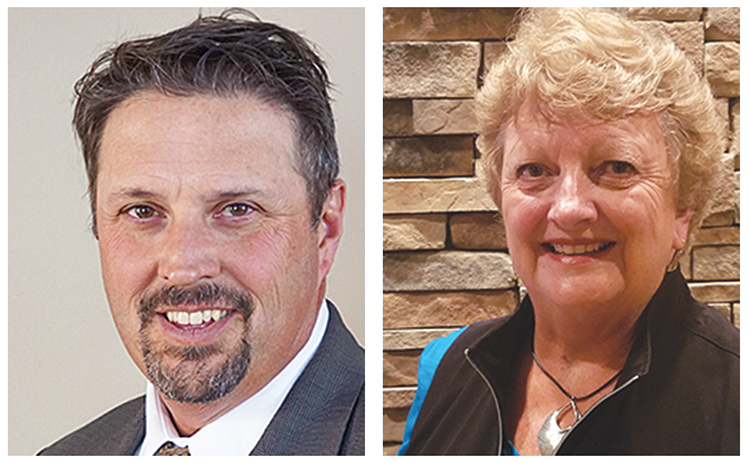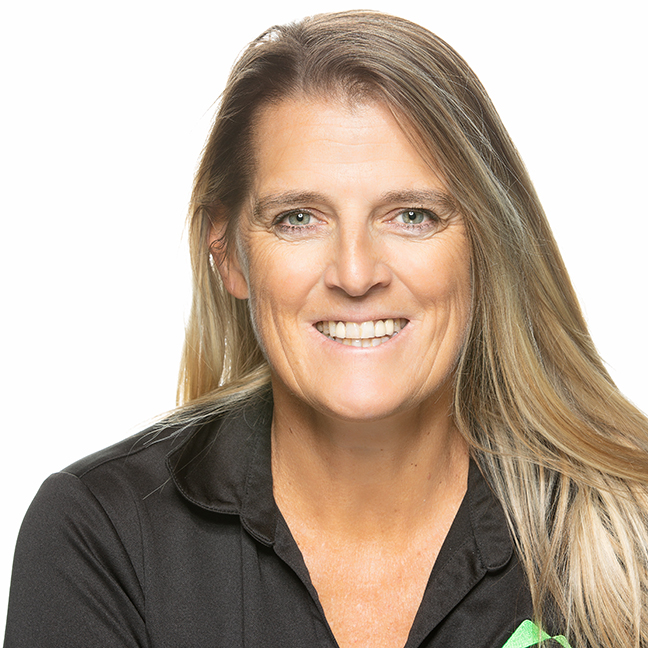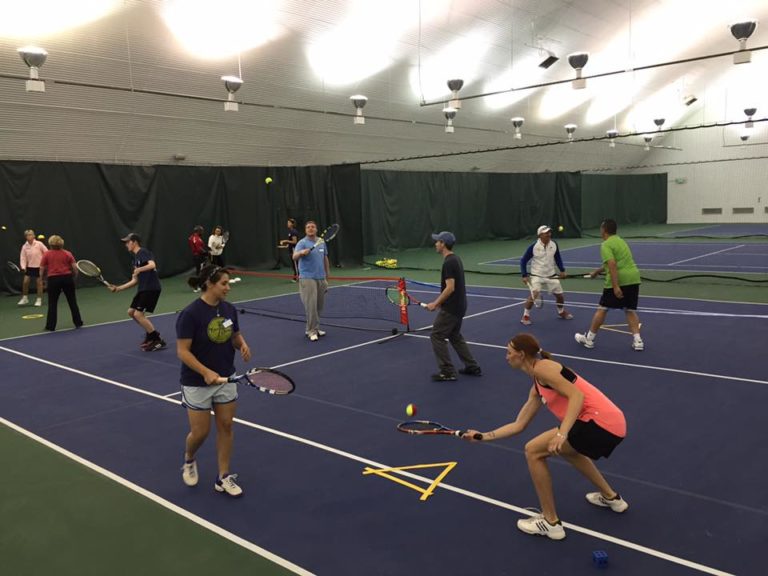Spotlight: Colorado Area League Coordinators
Story by Tom Fasano / Colorado Tennis, Spring 2019
Area league coordinators throughout the state take a bow! Their job is to help run USTA Colorado’s adult and junior tennis leagues outside the Denver-metro area. Whether it’s in Aspen/Mountains, northern Colorado, southern Colorado or Western Slope, Colorado league tennis continues to grow and will likely welcome its millionth league player in the next couple of years.
With geographic differences and weather challenges in Colorado, these area league coordinators — Diane Westlind, Shelley Lundh Freeman, Jean Orton, Susan Swarmer, and Kathy Elliott (Adults), as well as Bryce Melcher and Mike Humphrey (Youth) — help make the great sport of tennis a fun experience and fulfilling for thousands of players.
They are great at what they do, and help operate the country’s largest league program. Let’s honor them.

Susan Swarmer 
Shelley Lundh Freeman 
Kathy Elliott 
Jean Orton 
Diane Westlind
For more than a quarter of a century, Diane Westlind has been an instrumental tennis figure in northern Colorado. She remembers how she got involved 26 years ago when her husband Gary and their three boys moved to Fort Collins from Broomfield in 1989.
“We had just started playing mixed leagues in Broomfield. (When we) arrived in Fort Collins and after settling in a bit and searching out opportunities for play, I discovered that there were no mixed leagues offered in northern Colorado,” Westlind said. “We only had Volvo Adult and Senior.”
Westlind didn’t sit around and wait for others to do something.
“So I called the USTA Colorado office and asked why. I was told there was no one willing to coordinate more than adult and senior,” she said. “I thought: ‘Well, how difficult can that be?’ Within a few months, the current coordinator moved and I was offered the opportunity to work for USTA Colorado. It’s cliché, but the rest is history. We have been growing ever since, now offering 13 leagues. For the first time, I am offering the Tri-Level League as a pilot league. It looks to be off with a bang!”
While Orton (southern Colorado) recalls playing league tennis and then being asked to apply for the job from the previous coordinator about 15 years ago, her southern Colorado colleague Swarmer said her girlfriend was working as a USTA coordinator for southern Colorado.
“She suggested that I come in and work to help her,” said Swarmer, an area league coordinator for 15 years. “I began to work some of her leagues and when she moved on to other things I took over all the leagues.”
Freeman, a coordinator since 1998, said she became involved when she wanted to find more players for her and her boyfriend to play.
“So, I started a USTA mixed doubles league in our area. I eventually became the area coordinator for all of the leagues in Aspen and the Mountain Areas,” Freeman said.

Mike Humphrey 
Bryce Melcher
The two youth coordinators — Humphrey (southern Colorado Junior Team Tennis) and Melcher (first year as northern Colorado JTT) — enjoy working with youth tennis players.
“I had been running the JTT program for four years and was asked to take over when the current JTT coordinator left,” Humphrey said.
Although this is his first year as an area league coordinator, Melcher was the JTT coordinator at the Fort Collins Country Club for the last four years, which includes promoting, organizing and running JTT at the club.
The best thing for Melcher when it comes to JTT is that the kids are able to participate as a team.
“Tennis is such an individual sport and all the kids get used to competing against each other,” Melcher said. “JTT emphasizes support and encouragement as they push each other to improve in the sport while trying to win as a team. With the matches being decided by total games won and not by matches won, it trains the kids to never give up no matter the score as any games won can help the team get the victory.”
Humphrey said the best part of JTT is the ability to have all levels of players be able to compete in a league.
“This is truly the only avenue for kids to play competitively without having to enter tournaments and they are also able to play in a team environment,” he said.
Westlind said the best thing about league tennis is the team camaraderie.
“I always like to win, but I work hard to make it a good experience, win or lose,” Westlind said. “Socializing with not just my teammates but with the opponents after a match is very important to me.”
Orton said the best aspect about league tennis is making lifelong friends and playing on a team for 15 straight years.
Freeman loves the challenge of league tennis — both mentally and physically.
“It’s fun, social, competitive, good exercise and always a good challenge,” she said. “I really enjoy meeting new tennis players of all levels and sharing our mutual love of the game. I love getting more people involved.”
As far as what tennis means to the players whom they see every day in the community, Swarmer said that the sport brings people together from all walks of life and can be played for a lifetime.
Westlind likes how tight the tennis community in northern Colorado has become and how involved they are in the community through tennis.
“That is evidenced by the support for multiple benefit tournaments that are sponsored by nearly every USTA organizational member on a regular basis. It’s also evident in the number of regular players that come out to cheer on the Colorado State University women’s team at home matches,” Westlind said. “Jarod Camerota, the head women’s coach, is a regular league player. He and the team also support and host multiple events at the CSU tennis complex.”
Westlind is a member of the committee that organizes the annual Ladies Day Doubles tournament (a one-day event) to benefit Crossroads Safehouse — a shelter in Fort Collins for victims of domestic abuse.
“It would not be the success it is without the use of the 12-court complex. In 2018, we donated over $23,000 in cash to Crossroads from the support of many sponsors and 120 players. Scott Langs, the assistant women’s coach, is the former longtime director of tennis at the Fort Collins Country Club. He is the NOCO representative on the USTA Colorado Adult League Committee. Laurie Anderson, director of tennis at Work Out West in Greeley, sits on the USTA Colorado Board of Directors. These are just a few examples of the scope of NOCO activity.”
On the younger side, Humphrey said tennis allows kids to learn lessons for life such as how to deal with adversity, be honest, learn to stand up for themselves, provides a social platform to learn communication skills and learn the skill of goal setting.
Melcher said tennis benefits kids by giving them physical exercise and by teaching them life lessons.
“Kids are really able to see that hard work pays off which is a great lesson to learn,” Melcher said. “Tennis is one of the few activities that we can do our entire lives, and through tennis you can find friendships that will last forever.”
The consensus from the coordinators — youth and adults — is that adults and kids like playing on a team because of the social aspect, competing in a team environment, great exercise, the challenge, the camaraderie and the friendships that are forged.
In addition, tennis always has that match or experience that people never forget. Take Freeman, for example. Her most memorable experience playing leagues was participating in one of the longest singles matches she had ever played in the CTA Twilight Districts in 2017 … and finally pulling out a win.
“I was playing against a girl (Adrienne Jaycox) who was just as tenacious and determined to win as myself. It felt like I was playing against myself. It could have gone either way,” Freeman recalled. “We were actually playing a shortened format due to inclement weather — an eight-game pro set. However, it went as long as any regular best two-out-of-three match. I thought we were both going to die! I was so glad we weren’t playing a full regular format match!”
It’s memories like Freeman’s and the ones they help create for others as area league coordinators that make what they do so special to so many players in Colorado. CT






